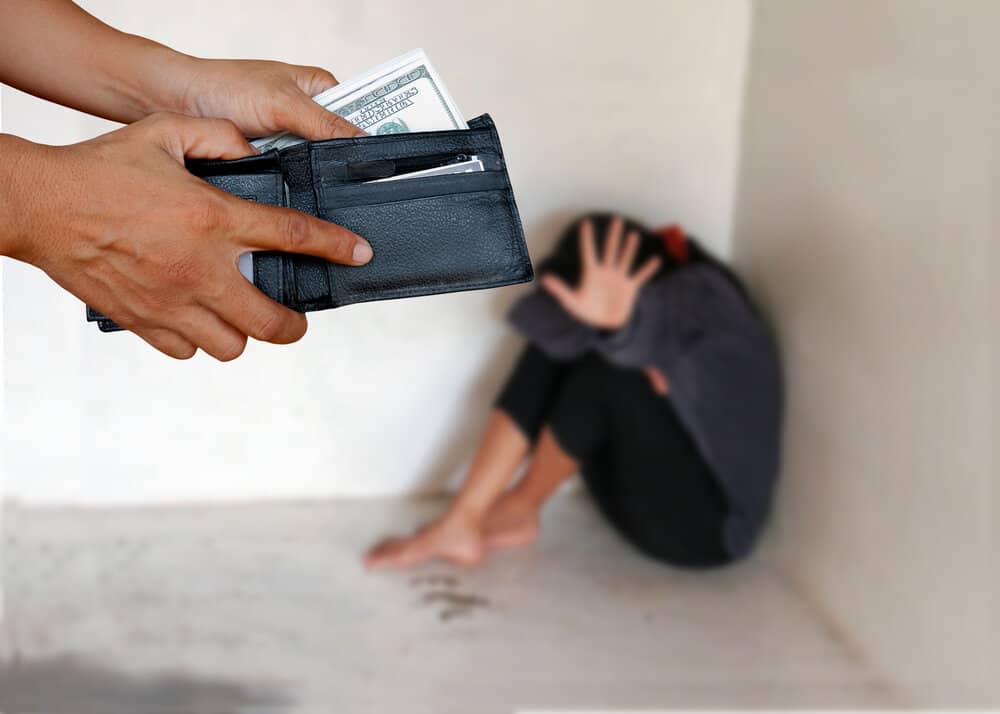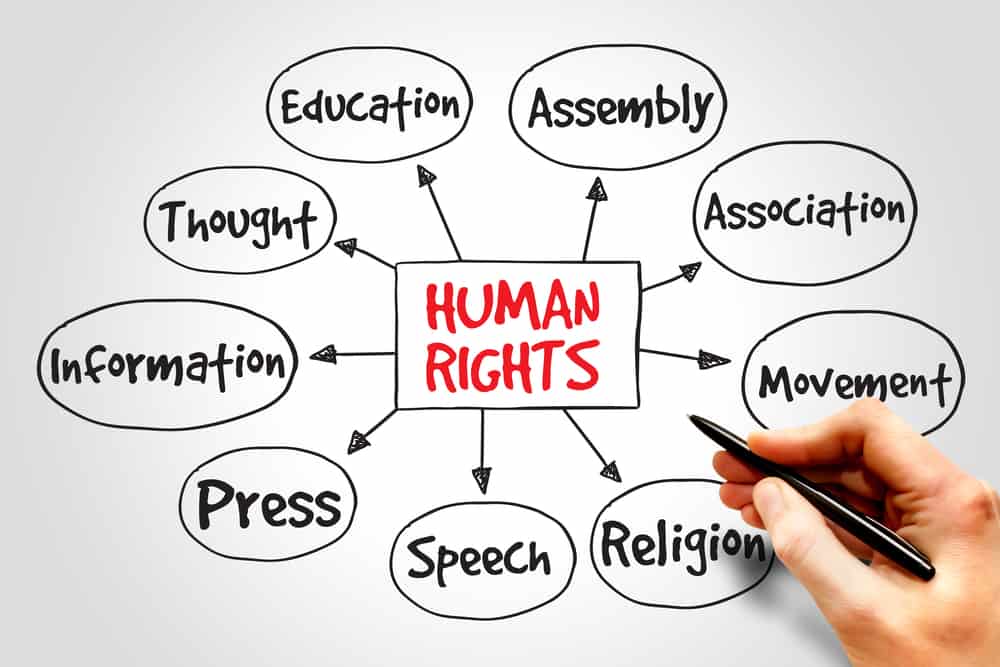Prostitution is an age-old practice often dubbed the “world’s oldest profession.” It has persisted throughout history in various forms across the world’s diverse cultures, societies, and geographic locations. Despite moral and legal differences among countries, the phenomenon remains an inescapable reality. A notable question arises: which country has the highest rate of prostitution?
To answer this question, one must first consider the various factors that contribute to the prevalence of prostitution. These can include socioeconomic conditions, legal standing, and cultural norms. In addition, accurate data on this controversial subject is hard to come by, as it often relies on estimates and research on the underground trade. However, it is possible to identify countries with notably high rates of prostitution based on available information.
It is important to remember that a few countries are known for having significant sex industries due to tourism, local demand, or economic necessity. Countries like Thailand, Cambodia, and parts of Germany (where prostitution is legal and regulated) are often mentioned in discussions about the sex industry. However, it’s worth noting that having a visible sex industry doesn’t necessarily mean that these countries have the “most” prostitution; it’s just more visible and regulated.
Key Takeaways
- Determining the country with the most prostitution requires considering socio-economic, legal, and cultural factors.
- Accurate data is difficult to obtain due to the underground nature of the trade.
- High rates of prostitution are observed in various regions, such as South and Central America, the Caribbean, Asia, and Africa.
Understanding Prostitution
Prostitution, often called the “world’s oldest profession,” involves exchanging sexual services for money or goods. It is practiced globally, and the individuals involved in this profession, known as sex workers, can be both men and women. The reasons for people entering into sex work are diverse, ranging from financial necessities to personal choices or circumstances.
In many countries, prostitution is illegal and considered a criminal offense, leading to risky underground operations. However, some countries adopt a more open-minded approach and have various levels of legalization or regulation. Decriminalization is another model implemented to reduce the vulnerability and stigmatization of sex workers; it is achieved by treating sex work as a legitimate profession without criminalizing the workers or clients.
There are several ways in which prostitution is practiced, the most common being street prostitution, brothels, and escort services. In street prostitution, sex workers solicit clients in public spaces, often in areas known for such activities. Brothels are usually establishments where sex workers provide services managed by third parties such as pimps or madams. Escort services involve sex workers providing companionship or sexual services to clients at a location of their choice, often hotels or private residences.
When determining which country has the most prostitution, many factors need to be considered. These include the legal status of prostitution, the accessibility of services for sex workers and clients, and the overall demand for paid sexual services. Some estimates suggest that the number of sex workers worldwide is in the millions, but obtaining definitive figures is challenging due to the clandestine nature of the industry and the varying legal status across different countries.
In conclusion, understanding prostitution requires examining the various models, practices, and factors contributing to its prevalence across countries. There is no clear answer to which country has the most prostitution. However, recognizing the industry’s complexities will provide a better understanding of its implications for society and the individuals involved.
Countries with High Rates of Prostitution
Prostitution is a global phenomenon, with some countries having higher rates than others. This section highlights the countries where prostitution is most prevalent.
Germany is known for its legalized prostitution, leading to an increase in sex workers and brothels. In Thailand, sex tourism is a significant part of the economy, attracting tourists worldwide. Brazil also experiences a high rate of sex tourism, particularly during the Carnival season. In China, prostitution is technically illegal, but it remains widespread, especially in urban centers.
Colombia has a large prostitution market, fueled mainly by drug-related violence and poverty. Similarly, India and the Philippines face high rates of prostitution due to poverty and a lack of employment opportunities for women. Prostitution continues to be a pressing issue in Spain, where it is neither fully legalized nor penalized.
In Australia, Finland, Bolivia, and the Netherlands, sex work is somewhat regulated, leading to tolerance toward the industry. While illegal in France and Denmark, prostitution still occurs in these countries, partly due to their attractiveness to tourists.
In Mexico, the United States, Argentina, Canada, and Nevada (where it is legal), prostitution levels are considerable, with authorities striving to regulate or combat the industry. In Asian countries like Japan, South Korea, and New Zealand, prostitution remains a significant issue despite efforts to combat the trade.
In some European countries, such as Lithuania, Austria, Latvia, Croatia, Czech Republic, Turkey, Belgium, Italy, and Slovenia, prostitution remains a contentious issue, with varying degrees of regulation or penalties in place. Finally, even in countries like Zimbabwe, where prostitution is illegal, it remains prevalent as an underground business.
The factors driving high rates of prostitution in these nations include poverty, unemployment, drug addiction, and global demand for sex services. It is essential to consider these factors when discussing prostitution in a given country.
Trafficking and Prostitution
Human trafficking, including sex trafficking, is a global problem that affects millions of people each year. Exploitation in the form of prostitution is prevalent in countries with high rates of trafficking victims. This section will discuss the connection between trafficking and prostitution, focusing on the country with the most prostitution.
Many sources have ranked Venezuela with the highest number of prostitutes per capita. The country’s worsening socio-economic and political situation has forced numerous women into prostitution, often involving trafficking and exploitation. The traffickers commonly target vulnerable individuals, luring them into sex trafficking with false promises of better lives and opportunities.
In addition to Venezuela, other countries such as Thailand, Nigeria, and Brazil have been recognized for their high rates of human trafficking and prostitution. Most victims in these situations endure physical and psychological abuse, forced labor, and restriction of their freedom.
Traffickers employ various methods to control and exploit their victims, such as debt bondage, threats of violence, and manipulation of personal documents. The victims are often marginalized individuals, including migrants, refugees, and those from low socio-economic backgrounds. This makes it challenging for them to escape their dire circumstances and regain control of their lives.
International and local organizations work tirelessly to combat trafficking and prostitution through preventive measures, awareness campaigns, and law enforcement. A holistic approach is required to tackle the root causes of these issues, such as poverty, lack of education, and gender inequality.
In conclusion, the close connection between trafficking and prostitution is evident across many countries, with Venezuela currently holding the title for the highest rates of prostitution. Efforts to reduce these issues continue, and it remains crucial for governments and organizations to recognize and address the underlying factors that enable trafficking and exploitation to thrive.
Child Prostitution and Exploitation
Child prostitution and exploitation is a global issue affecting millions of minors worldwide. The trade thrives in various countries due to poverty, lack of education, and weak law enforcement. However, certain nations report higher instances of child prostitution and exploitation than others.
In some Asian countries, child prostitution is a significant problem, with minors being trafficked and exploited within their borders or across international borders. Thailand and Cambodia are two countries in the region where child prostitution has been historically prevalent. In these nations, organized crime networks and impoverished families contribute to minors’ recruitment, sale, and exploitation.
- Thailand: This country has been long associated with child prostitution, particularly due to its thriving commercial sex industry. Children from poor families in rural areas are often trafficked to urban centers or tourist destinations and forced into prostitution.
- Cambodia: Like Thailand, child prostitution in Cambodia stems from poverty and increasing demand from tourists, expatriates, and even locals. Children in Cambodia are often lured by promises of better lives, only to find themselves trapped in a life of exploitation.
In Africa, countries like Nigeria and South Africa grapple with widespread child prostitution, as well. Economic hardship and limited education opportunities push many vulnerable minors into the sex industry.
- Nigeria: Nigeria experiences high rates of internal and cross-border trafficking. Many girls and young women are coerced into prostitution, often in neighboring countries or even as far as Europe.
- South Africa: Despite strong legal frameworks, child prostitution remains a problem in South Africa. Factors such as income inequality, increased migration, and widespread sexual abuse contribute to the exploitation of minors in the country.
Latin America is another region where child prostitution is a critical issue. Countries like Brazil and Colombia have received increased attention for their struggles to combat the exploitation of minors.
- Brazil: Brazil is a known destination for child sex tourism, with minors exploited in tourist-heavy regions like the Northeast coast. The country has taken steps to address the problem, but limited resources and social acceptance of the sex industry contribute to its continued prevalence.
- Colombia: Colombia deals with both domestic and international trafficking of children for sexual exploitation. Organized crime networks play a significant role in these operations, capitalizing on unstable socioeconomic conditions to prey on vulnerable minors.
While comparisons or attempts to rank countries would be inappropriate, it is crucial to recognize that child prostitution and exploitation are pervasive issues affecting many nations. Efforts to address and combat this reprehensible practice must continue, focusing on providing access to education, reducing poverty, and strengthening legal protections for minors.
Legal Status and Regulations
In various countries, the legal status and regulations regarding prostitution differ significantly. Some countries have chosen to legalize and regulate prostitution, while others have opted for decriminalization or a strict prohibitionist approach.
In countries where prostitution is legal and regulated, such as Germany and the Netherlands, sex work is considered legitimate. Professional sex workers must register with the authorities and adhere to specific regulations. However, some have criticized this approach as it may increase the demand for sex services and potentially exacerbate human trafficking issues.
On the other hand, countries like New Zealand and some parts of Australia have chosen to decriminalize prostitution. These countries do not treat sex work as a criminal act but instead regulate the industry to protect sex workers’ rights and minimize harm. Decriminalization has been praised for promoting a safer work environment for sex workers while maintaining some control over the industry.
Some countries like Sweden, Norway, and France follow abolitionist or neo-abolitionist policies. These countries criminalize the purchase of sexual services but not the sale, effectively targeting clients of sex workers rather than the workers themselves. The approach aims to reduce the demand for prostitution services while supporting sex workers in leaving the industry.
Prohibitionist policies are adopted by countries where engaging in or soliciting prostitution is considered criminal under federal law. In these nations, both sex workers and clients face legal penalties. Examples of countries with prohibitionist policies are the United States (except for some counties in Nevada) and some parts of Asia.
It is essential to note that the legal status and regulations surrounding prostitution directly impact the prevalence of sex work within each respective country. While it is difficult to determine which approach is most effective in curbing the industry’s prevalence, understanding the various legal models can provide insight into the complexities of regulating prostitution.

Prostitution Establishments
Regarding the number of prostitution establishments, it is commonly acknowledged that Germany and the Netherlands have the most arranged systems for such facilities. Both countries have legalized and regulated prostitution, which has led to the establishment of numerous brothels, red-light districts, and prostitution rings.
In Germany, brothels are legal and widespread across the country. These establishments range from the luxurious and world-famous “Pascha” in Cologne, one of Europe’s largest brothels, to smaller, less luxurious facilities in various cities. Brothels in Germany generally have specific regulations and are obliged to follow strict health and safety guidelines.
The Netherlands is another country where prostitution establishments are legalized and regulated. Amsterdam’s red-light district, “De Wallen,” is one of the world’s most renowned and notorious areas where sex workers operate legally. The red-light district consists of a network of alleys, streets, and canals where sex workers display themselves in window parlors, attracting tourists and locals. Dutch establishments like German brothels must follow strict health and safety regulations to protect sex workers and clients.
Other countries with legalized or regulated prostitution, such as Switzerland, Austria, and some regions in Nevada, USA, have also seen an increase in prostitution establishments. These countries or regions have licensed brothels and red-light districts that offer varying levels of luxury and affordability.
In conclusion, certain nations with legalized and regulated prostitution systems, such as Germany and the Netherlands, have numerous prostitution establishments, including brothels and red-light districts. Strict regulations and health guidelines ensure that these establishments maintain a safe environment for workers and clients, contributing to the prevalence and acceptance of these types of establishments in those countries.
Sexually Transmitted Infections
Prostitution is a global phenomenon that can be associated with the transmission of sexually transmitted infections (STIs), including HIV. The prevalence of STIs varies greatly from country to country, but some general trends can be identified.
In countries where prostitution is widespread, the rate of STIs among sex workers and their clients may be higher than in the general population. This is mainly due to the lack of comprehensive campaigns promoting condom use and regular testing and the social stigma associated with these practices. The proper use of condoms is crucial in minimizing the risk of STIs, including HIV.
In some countries where prostitution is legal and regulated, STI rates tend to be lower. This is usually the result of government intervention, ensuring that sex workers have access to healthcare services and receive regular health check-ups, often including screening for STIs. Additionally, regulations in these countries often require mandatory condom use during sexual encounters, greatly reducing the spread of infections.
It is important to note that STI rates are subject to multiple factors, such as general public health policy measures, access to healthcare, and cultural norms around sexual behavior. Therefore, it can be difficult to draw direct conclusions from the data on prostitution and STI prevalence.
The global fight against HIV has significantly improved prevention, testing, and treatment services. However, sex workers, particularly in countries where prostitution is illegal or unregulated, still face a higher risk of contracting HIV. It is essential to continue pushing for comprehensive, evidence-based prevention strategies for all populations, including sex workers, to curb the spread of STIs and maintain public health.
Gender and Prostitution
Prostitution is a complex and multifaceted issue, with gender playing a significant role in its prevalence and dynamics. In most countries, women make up most of those involved in prostitution, although there are also cases of male and transgender sex workers. This section explores the gender dimension of prostitution, focusing on the various factors that influence the involvement of men, women, and transgender individuals in the sex trade.
Women are generally more vulnerable to exploitation in prostitution due to a variety of factors. Societal norms and expectations often place greater pressure on women to conform to traditional gender roles, leading to limited economic opportunities and increased dependence on male providers. Additionally, women may face greater social stigma and discrimination when trying to exit prostitution, further complicating their situation.
Men, although a minority within the context of prostitution, face their unique challenges. Often, male sex workers cater to a predominantly male clientele and, as a result, may experience both homophobia and misogyny. While male prostitutes are less common in some countries, they still exist in many parts of the world, often catering to niche markets or working in locations such as public spaces or online platforms.
Transgender individuals, particularly transgender women, are also disproportionately represented in prostitution. This can be attributed to the multiple layers of discrimination and marginalization they face in society. Like cisgender women, transgender sex workers may be particularly vulnerable to violence, harassment, and exploitation due to their marginalized status.
In addressing the issue of prostitution, it is crucial to recognize and consider the various gender-related factors that contribute to the involvement of men, women, and transgender individuals in the sex trade. By understanding these factors, policymakers and stakeholders can develop more effective strategies to tackle the root causes of prostitution and ensure the protection and empowerment of all those affected, regardless of their gender identity.
Cultural Aspects of Prostitution
In many cultures worldwide, prostitution has been accepted as a part of society. In the Caribbean, Central America, and South America, the attitudes toward prostitution vary significantly depending on the region and cultural background.
Caribbean: In some countries, prostitution is tolerated or even legal, such as in the Dominican Republic and Puerto Rico. The cultural attitude in these nations is less severe toward sex work, and tourists often contribute to the demand for the industry. However, this does not mean that there aren’t negative consequences for those involved in prostitution, such as social stigma and vulnerability to violence, disease, or exploitation.
Central America: In Central American countries like Costa Rica, prostitution is legal and regulated, with sex workers required to register and undergo regular health checks. Despite these regulations, the cultural perception of sex work is still largely negative, and prostitutes are often looked down upon. In contrast, countries like Nicaragua have completely outlawed prostitution, and cultural attitudes toward sex work are much more conservative.
South America: In South America, the cultural aspects of prostitution differ significantly between countries. For example, Argentina and Colombia allow legal prostitution, while sex work is illegal in Venezuela and Suriname. The cultural acceptance of prostitution may also differ within these countries based on regional differences and socioeconomic factors.
The influence of religion, such as Catholicism and other Christian denominations, can contribute to the cultural attitudes towards prostitution. In heavily religious areas, sex work may be more stigmatized and face societal disapproval due to teachings around sex and morality.
While some locations might have a more lenient attitude towards prostitution, it is essential to recognize that sex workers often face significant risks, including violence, abuse, and social exclusion. As cultural attitudes and legal regulations continue to evolve, a more nuanced understanding of the complexities surrounding prostitution worldwide is necessary for addressing the concerns and well-being of sex workers in various societies.
Sex Tourism
Sex tourism is a multi-billion-dollar global industry that often involves exchanging sexual services for money or other rewards. Prostitution laws vary greatly from country to country, leading some to have a higher prevalence of sex tourism. In countries where prostitution is legal or tolerated, sex tourism can be a significant industry.
Thailand is one of the most well-known destinations for sex tourism, with its thriving red-light districts that attract thousands of tourists annually. Legalizing prostitution has allowed for a regulated industry with designated areas for sex work. In contrast, in other countries like Brazil, where prostitution is also legal but still heavily associated with human trafficking, the industry is more clandestine.
The Netherlands is another famous destination for sex tourism due to its legalization of prostitution. The city of Amsterdam has an iconic red-light district where sex work is regulated and monitored by the government, providing a safe and controlled environment for both tourists and workers.
Another important aspect of sex tourism is the demand for specific demographics of sex workers, such as minors or people from certain countries or ethnic backgrounds. This demand contributes to the trafficking and exploitation of these vulnerable populations. For example, Cambodia has been a major destination for child sex tourism, although concerted government and international organizations’ efforts have decreased its prevalence in recent years.
In some instances, sex tourism occurs in countries with harsh anti-prostitution laws. The Dominican Republic is an example of a popular tourist destination with strict laws against prostitution, yet the industry continues to thrive. In these cases, lacking regulation and enforcement often leads to more dangerous working conditions and a higher likelihood of exploitation.
In conclusion, the prevalence of sex tourism is tied to various factors, such as the legality and regulation of prostitution, cultural attitudes toward sex work, and the demand for specific demographics of sex workers. Countries that have legalized and regulated prostitution often experience a higher prevalence of sex tourism, enabling better monitoring and control to protect workers and tourists.
Prostitution in Unique Regions
Prostitution is a global issue that varies in prevalence and legality. Unique regions such as Greenland and territories worldwide shed light on the complexity of this social issue.
In Greenland, prostitution is not explicitly illegal, but it is considered a part of “anti-social behavior,” which local authorities discourage. The remote nature of the territory contributes to the lack of resources to combat prostitution. Limited law enforcement, difficulty accessing healthcare, and cultural factors influence the landscape of prostitution in Greenland.
In territories worldwide, prostitution laws and practices differ significantly. For example:
- Puerto Rico, a territory of the United States, maintains a strict policy against prostitution. Relying on the US federal legislation, it prosecutes those involved in sex work as criminals.
- In the French Territories, such as Martinique and Guadeloupe, prostitution follows the legal framework of France. It is legal for individuals to engage in sex work, but activities surrounding the trade, such as brothels and pimping, are prohibited.
- In the Australian Territories of Norfolk Island and Christmas Island, local laws dictate the legality of sex work. While Australian federal law allows sex work, individual territories have the power to establish their laws.
Geographic location, governance, healthcare, and cultural context influence prostitution in unique regions. Examining these areas shows that addressing this global issue requires an in-depth understanding of these complexities.
Contrasting Practices
In some countries, prostitution is legal and regulated; in others, it is illegal and often associated with criminal activities, such as procuring, selling, and pimping. This variation in legislation and social attitudes leads to contrasting practices in the global context.
Sex workers operate differently across regions, with some countries having legalized and regulated workforces. Examples include Germany, Switzerland, and the Netherlands, where licensed brothels and red-light districts provide a safer and regulated environment. This system allows sex workers to obtain regular health checks, benefit from labor laws, and gain protection from potentially abusive clients.
In contrast, in countries where prostitution is illegal, such as the majority of the United States (excluding Nevada), or where it is allowed but associated services like brothels and pimping are forbidden, like in the United Kingdom – the landscape is much different. Sex workers often operate underground, making workers and clients vulnerable to violence, disease, and exploitation. In these cases, sex workers may have no legal recourse or support when faced with an abusive client or employer.
- Procuring: Outlawed in many nations, procuring includes a range of activities such as operating a brothel, recruiting sex workers for employment, or otherwise facilitating the work of a sex worker for financial gain. The consequences of procuring differ depending on the jurisdiction, but it is typically criminalized to reduce harm to sex workers and prevent associated criminal activity.
- Pimping: The act of profiting from a sex worker’s activity, usually by managing or leading the worker. Pimping is frowned upon in societies that condemn exploitation and is often illegal, though not always. It may become problematic in jurisdictions where it remains legal, as it potentially fosters exploitation and could encourage trafficking.
Efforts to curb exploitation and maintain safety in the sex industry vary between countries. In places where prostitution is legalized and regulated, prostitution rates may be higher than in places where it is prohibited. However, it does not provide a definitive answer as to which country experiences the highest level of prostitution, as accurate data on this topic is often unavailable or inconsistent due to the clandestine nature of the subject matter.
Prostitution in South and Central American Countries
In Mexico, prostitution is decriminalized, but procuring and pimping are illegal. Prostitution occurs in various forms, from street sex workers to brothels and even online. However, human trafficking is a significant issue in Mexico, and many sex workers fall victim to this crime.
Brazil has legalized prostitution, but brothels and pimping are against the law. Despite this, illegal prostitution venues exist in larger urban centers. Brazil’s legal system also aims to protect the rights of sex workers, offering some social benefits to those registered as professionals in this field.
In Argentina, prostitution is allowed, but brothels and promoting prostitution are prohibited. Sex workers often work independently or in discreet venues. Due to economic instability in some regions, sex tourism has become increasingly popular but remains controversial.
Costa Rica maintains a similar legal framework, permitting prostitution but forbidding pimping and brothels. The country is largely acknowledged as a popular destination for sex tourism. In Peru, prostitution is legal but only in licensed brothels, with illegal prostitution venues still operating.
Venezuela faces great economic and political challenges. Prostitution is technically illegal, but it has become more common due to the worsening crisis. Poverty and lack of opportunities have pushed many people into sex work, often with dangerous consequences.
In Cuba, prostitution is not explicitly illegal, but it is not regulated either, leading to an ambiguous legal situation. The Dominican Republic also experiences widespread prostitution, though it remains illegal. Poverty and sex tourism remain driving factors in such circumstances.
Ecuador, Guatemala, Honduras, and Nicaragua all have illegal prostitution as well. In these countries, poor economic conditions, violence, and a lack of social support compel many people to engage in sex work. In Panama, prostitution is legal and regulated; however, organized activities such as brothels and pimping are prohibited.
Paraguay, Uruguay, and Jamaica legalized prostitution but continue to face problems like human trafficking, underage prostitution, and the prevalence of illegal establishments. Effective law enforcement and monitoring are essential to improve the situation for sex workers and mitigate related risks.
Despite varying legal statuses among South and Central American countries, prostitution remains a complex societal issue intertwined with economic hardship, poverty, and inadequate social programs.
Prostitution in the Caribbean
The Caribbean region, known for its beautiful beaches and vibrant culture, also has a dark side when it comes to prostitution. Across several countries, including Belize, Jamaica, and various other islands, the prevalence of sex work remains a significant concern.
In Belize, prostitution is technically legal, but associated activities such as operating brothels or soliciting sex are not. Unfortunately, these legal distinctions have done little to curb the widespread practice, which often takes place in clandestine establishments. Poverty, inequality, and limited job opportunities are some factors that contribute to individuals turning to sex work as a means of survival in Belize.
Jamaica faces a similar situation, with sex work being a prevalent issue. Like Belize, Jamaica’s economy also struggles with poverty and unemployment, leading some individuals to prostitution. Despite being illegal, the practice of prostitution continues to thrive. This is often due to a lack of enforcement of anti-prostitution laws and a thriving tourism industry that attracts foreigners seeking sexual activities.
In smaller Caribbean countries such as the Dominican Republic, prostitution is legal and more regulated. However, sex trafficking remains a pressing issue in certain parts of the region, as there is a demand for commercial sex services.
- Poverty and unemployment: Major drivers of prostitution in the region
- Legal status: Varies across countries, from fully illegal to regulated
- Impact on broader society: Increase in sexually transmitted infections and human trafficking prevalent in the region
The Caribbean struggles with the impacts of widespread prostitution, as it not only affects the individuals directly involved but also contributes to broader social issues, such as human rights abuses and public health problems.
Prostitution in Asia
Asia is home to various cultures, religions, and societies, which have different perspectives on sex work. The prevalence of prostitution in countries such as China, Thailand, India, the Philippines, Malaysia, and South Korea can be attributed to various factors such as socio-economic conditions, political conditions, and historical factors.
China has a large population, and the demand for sex work has grown rapidly. Prostitution is illegal in China but remains widespread, particularly in cities and tourist regions. In recent years, the Chinese government has increased its efforts to combat human trafficking and illegal sex trade, but the industry continues to thrive underground. The rise in prostitution can be attributed to rapid urbanization, migration, and economic pressures.
Thailand is known for its booming sex industry, partially driven by tourism. Although prostitution is technically illegal, it is widely tolerated, and many red-light districts cater to locals and foreigners. The country’s economic difficulties and cultural acceptance of sex work have contributed to the prevalence of prostitution in Thailand. While the government has initiated crackdowns on illicit sex trade in recent years, these measures have had limited success.
India has a complex relationship with prostitution, where it is legal to practice sex work but illegal to solicit or operate a brothel. The country has a large population, and poverty is a significant driver of prostitution. The caste system, gender inequality, and lack of education further contribute to the problem. Despite efforts by NGOs and the government to support sex workers, India still has a high prevalence of prostitution.
In the Philippines, prostitution is illegal, but it remains a widespread issue. Economic factors like poverty, lack of job opportunities, and low wages drive individuals into sex work. The country’s tourism industry also contributes to the demand for prostitution. Efforts by government agencies and international organizations have been made to curb sex trafficking and improve the welfare of sex workers, but the industry remains active.
Malaysia has strict prostitution laws, but the reality is that the sex industry continues to boom. The country attracts foreign sex workers due to its relatively stable economy and proximity to more impoverished Southeast Asian countries. The demand is fueled by local and foreign clientele, and although the government has periodically launched crackdowns, prostitution remains a complex issue in Malaysia.
South Korea has long battled issues related to prostitution. Prostitution is illegal in the country, but it takes place discreetly in various forms, such as massage parlors, KTV bars, and karaoke rooms. There have been efforts by the government to enforce stricter regulations on the sex industry, but it remains a significant latent problem. Social stigma is a major barrier to addressing the issue.
Prostitution in Africa
In Africa, the issue of prostitution varies from country to country, with some nations exhibiting higher rates than others. Two such countries are Kenya and Zimbabwe.
In Kenya, prostitution is a widespread phenomenon driven by poverty, unemployment, and lack of education. The Kenyan government has tried to address the issue, but progress has been slow due to limited resources and socio-cultural constraints. Kenyan prostitutes, both male, and female, offer their services in various settings, including street corners, bars, and brothels. The prevalence of HIV/AIDS among sex workers in Kenya is a major concern, as these individuals are at a higher risk of contracting the virus.
On the other hand, Zimbabwe has experienced increased prostitution, primarily due to its troubled economic situation. The country’s hyperinflation, high unemployment, and political instability have driven many citizens to turn to prostitution for survival. Though aware of the issue, the Zimbabwean government has not been able to effectively address it or provide adequate support to those who have become involved in the industry.
In both countries, sex workers often face significant stigma and discrimination, further accentuating the issue. Additionally, the lack of proper legislation and enforcement around prostitution has allowed human trafficking and exploitation to flourish in these regions.
It is clear that tackling the problem of prostitution in Africa, specifically in countries like Kenya and Zimbabwe, requires comprehensive and sustained efforts. This includes addressing the root causes, improving access to education and healthcare, and implementing effective policies that protect the welfare and rights of sex workers.
Israel’s Shift in Prostitution Laws: Protecting Sex Workers and Criminalizing Buyers
In a landmark move, Israel undertook a progressive shift in its approach to prostitution. Historically, the country had a stance where it was illegal for sex workers to offer services, yet paradoxically, those paying for such services were not subject to any legal repercussions. This placed the onus and risk predominantly on the sex workers, exposing them to potential legal and personal hazards.
Recognizing the inherent vulnerabilities and dangers faced by sex workers, Israel’s legislative framework underwent a transformative change. To safeguard the rights and safety of these individuals, the country decriminalized the act of offering sexual services. Instead, the legal spotlight was shifted onto the buyers of these services, criminalizing the act of purchasing sex.
This legislative pivot reflects the “Nordic Model” or “Swedish Model,” which focuses on the belief that criminalizing buyers can reduce demand for prostitution, indirectly curbing the industry and offering protection to sex workers. Through this approach, Israel seeks to strike a balance between acknowledging the realities of sex work while striving to reduce its prevalence and the exploitations associated with it.
The Dark Underbelly: Trafficking, Exploitation, and Coercion in Sex Work
While it’s essential to discuss and analyze the legal aspects of prostitution, we cannot turn a blind eye to the grim realities that many sex workers face. Behind the industry’s veil lies many stories of pain, manipulation, and entrapment.
Many sex workers worldwide are victims of human trafficking, forcibly transported across borders and trapped in a life they never chose. Vulnerable populations, like runaways, often find themselves ensnared in this trade, looking for a means of survival but ending up in the clutches of exploiters.
Additionally, there’s a distressing trend where women are compelled into the profession by those they trust – boyfriends, acquaintances, or even family members. They’re often lured with promises of a better life, only to be entrapped in a cycle of debt they’re told they owe and must work off through sex work.
The narrative of women being tricked into needing to “work off” debts is a classic modus operandi used by traffickers and pimps to maintain control over their victims. This debt bondage ties the individual to their trafficker, creating a seemingly inescapable cycle of exploitation.
It’s imperative to approach sex work with sensitivity and nuance, understanding that while some enter the industry by choice, others are caught in a web of deceit, manipulation, and force. This underscores the importance of robust legal systems and social support networks to protect the rights and well-being of sex workers.
Frequently Asked Questions
Which country has the highest rate of prostitution?
It is difficult to determine the country with the highest rate of prostitution due to varying legal statuses and under-reporting. However, some studies suggest that countries with high poverty rates and limited economic opportunities, such as Venezuela and some African nations, might have a higher prevalence of prostitution.
In which countries is prostitution legal?
Prostitution is legal in several countries, including Germany, Switzerland, the Netherlands, and some parts of Nevada in the United States. Laws regarding sex work vary widely across the globe, with some countries regulating the industry while others criminalize all forms of sex work.
What are the most known places for prostitution?
Famous red-light districts known for prostitution include the Reeperbahn in Hamburg, Germany; De Wallen in Amsterdam, Netherlands; Kabukicho in Tokyo, Japan; and Soi Cowboy in Bangkok, Thailand. These areas attract tourists and offer a variety of adult entertainment, including sex work.
What are the worldwide statistics on prostitution?
Global statistics on prostitution are difficult to obtain due to differences in legal status and under-reporting. However, it is estimated that there are around 42 million sex workers worldwide, most female. In some countries, sex work accounts for a significant percentage of the GDP, such as in Thailand, estimated at around 10%.
Where do prostitutes make the most money?
Prostitutes can potentially make the most money in countries where the sex industry is legal and well-regulated, such as Switzerland, Germany, and the Netherlands. In these countries, sex workers have access to health care, regular check-ups, and legal protection, which allows them to charge higher fees for their services.
What is the biggest red light area in the world?
The biggest red light area in the world is believed to be the Sonagachi district in Kolkata, India. It is estimated that around 10,000 to 12,000 sex workers are active in this area and reside in multi-storied brothels. This location is characterized by extreme poverty and difficult living conditions for its inhabitants.








